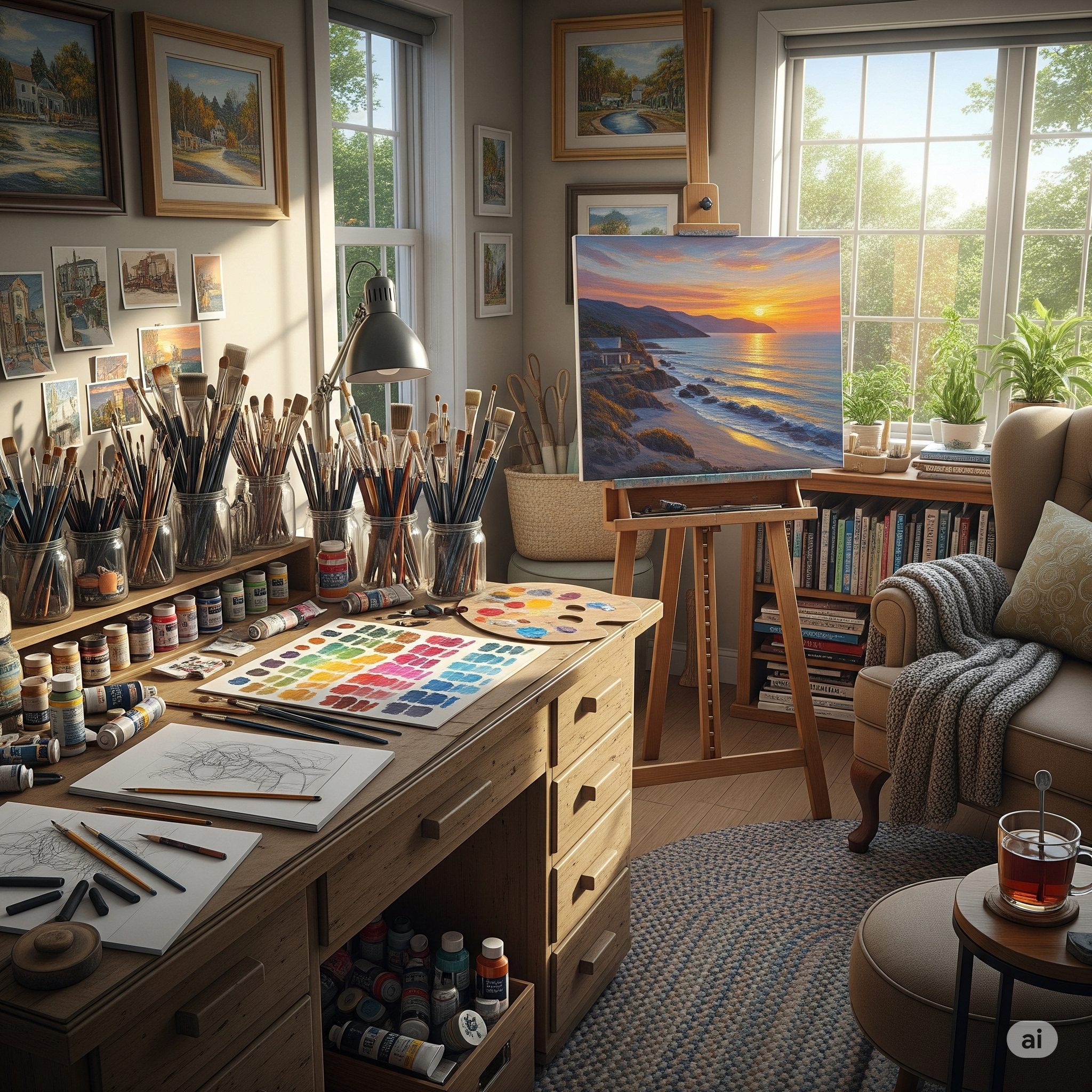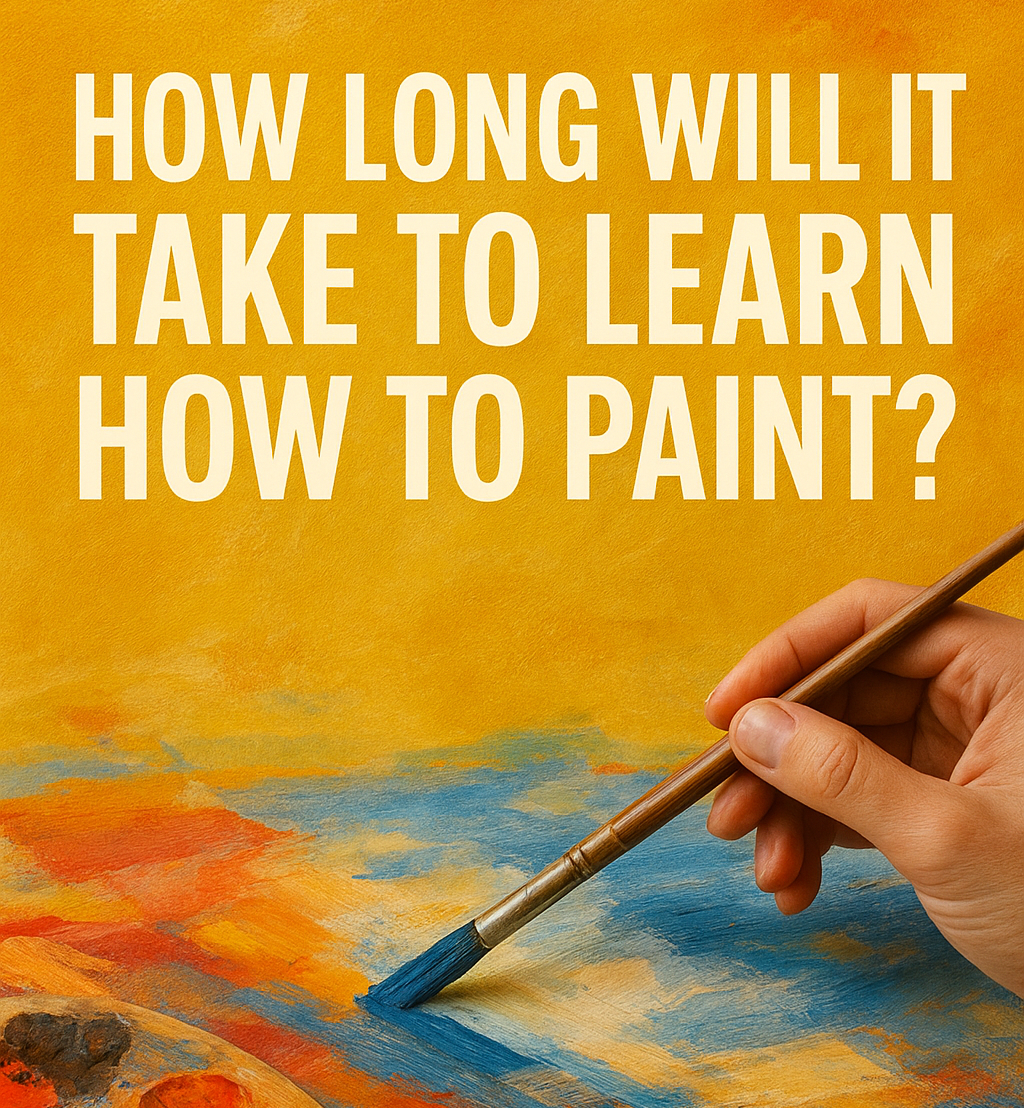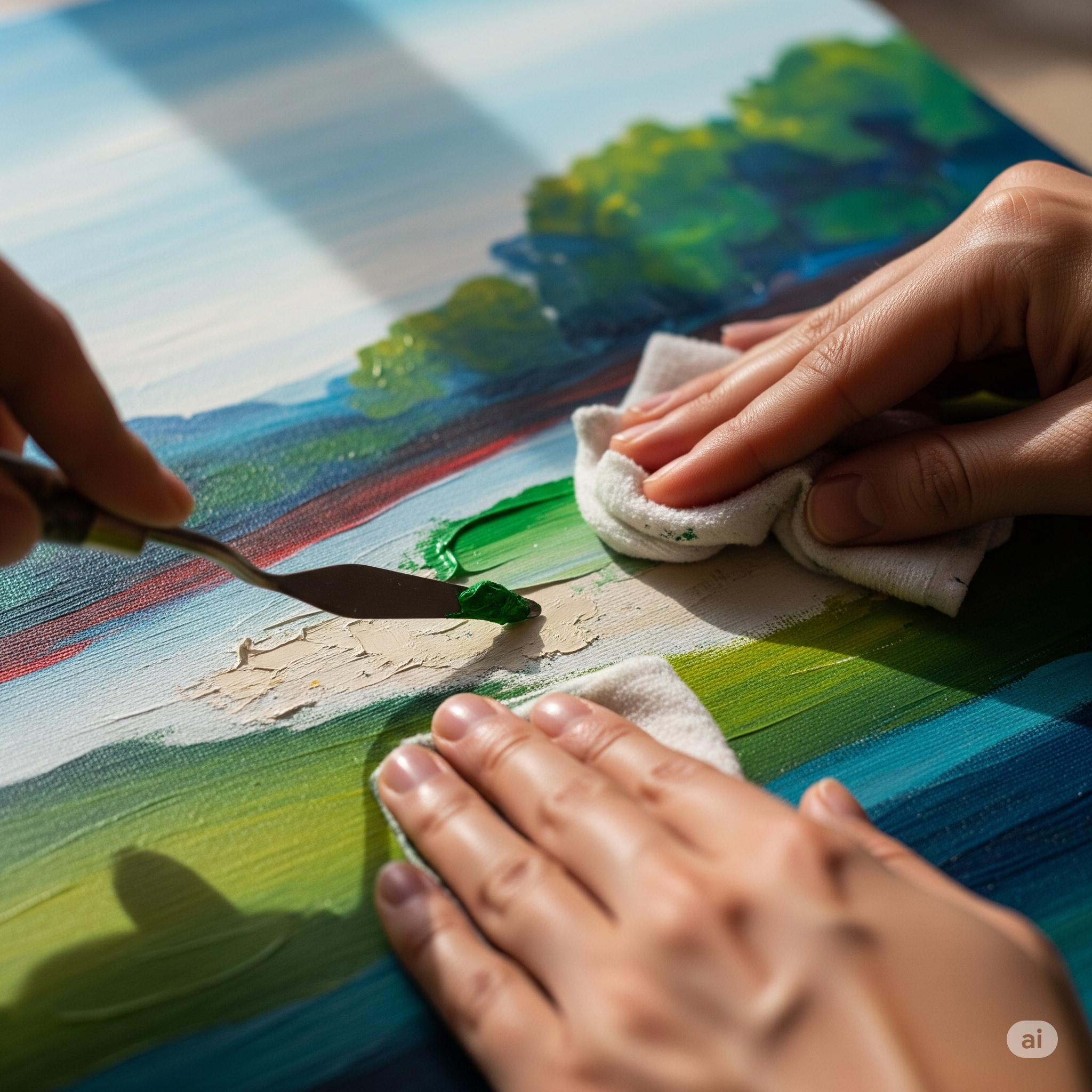
Your creative space is more than just a spot to paint — it’s where inspiration flows, ideas take shape, and masterpieces are born. Whether you’re working in a spare room, a kitchen corner, or under a sunny tree in your backyard, the right setup can make your painting sessions more enjoyable and productive. In this guide, we’ll explore different ways to arrange your space, the pros and cons of each, and tips to keep you comfortable while protecting your surroundings
1. Comfort Comes First – Ergonomics Matter
No matter where you choose to paint, your body positioning is crucial. Long painting sessions can quickly turn uncomfortable if your setup causes you to hunch, strain your neck, or keep your arms too high or low.
Tips for ergonomic comfort:
- Keep your canvas at hip height when standing.
- Adjust your easel so your shoulders are relaxed, not raised.
Take breaks to stretch and step back from
2. Expect (and Manage) the Mess
Painting is fun — but it can also be messy. Even careful artists can have:
- Accidental paint splatters
- Drips on the floor
- Spills from rinse water
The good news? Acrylic paint cleans easily with water and soap before it dries. Once it dries, it’s trickier to remove, so act quickly.
Mess-management tips:
- Use an old sheet, drop cloth, or plastic to protect floors.
- Wear an apron or old clothes.
- Keep paper towels or rags near by your work
3. Indoor vs. Outdoor Painting
Indoor Spaces
✅ Controlled temperature & lighting
✅ Easier to protect from wind, dust, and sudden weather changes
⚠ Must take extra care with ventilation if using sprays or varnishes
Outdoor Spaces
✅ Natural light for vibrant color perception
✅ Inspiring scenery
⚠ Weather and humidity can affect drying time
⚠ More difficult to manage supplies in windy or damp conditions If painting outdoors, set up in a shaded, stable area and keep your supplies secure
4. Choosing the Right Easel Setup
A tripod easel is the classic choice for art students and hobbyists. Here’s how to make it work for you:
- Standing position:
- Set the canvas bottom at hip height for large canvases.
- Ensure enough space behind you to step back and review your work.
- Seated position:
- Place your easel to your left or right depending on your dominant hand.
- Keep your reference material — objects, scenery, or a tablet — within easy view.
Other easel options:
- Desktop easels for small spaces
- Large professional easels for oversized canvases
- Travel easels for painting on the go
5. Adaptive Setups for Special Needs
Painting should be accessible to everyone. If you have physical limitations, adapt your setup to suit your needs. Take inspiration from artists like Frida Kahlo, who painted from bed with custom arrangements. There’s a wide range of adaptive equipment available — from adjustable easels to angled work tables — to make painting possible and comfortable for all.
6. Final Thoughts on Your Creative Space
There’s no one-size-fits-all approach to setting up a painting space. What matters is that you feel comfortable, inspired, and free to create without unnecessary distractions. Experiment with different arrangements until you find the setup that keeps your creativity flowing. Remember: your creative space is an extension of your artistic mind — treat it with care, protect it from mess, and make it a place you can’t wait to come back to.



